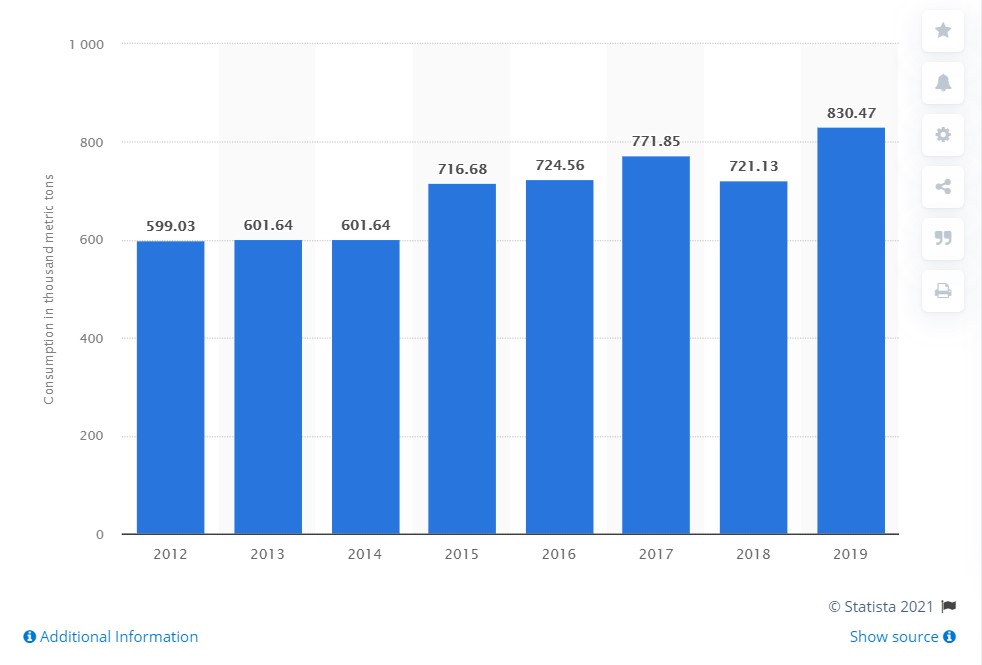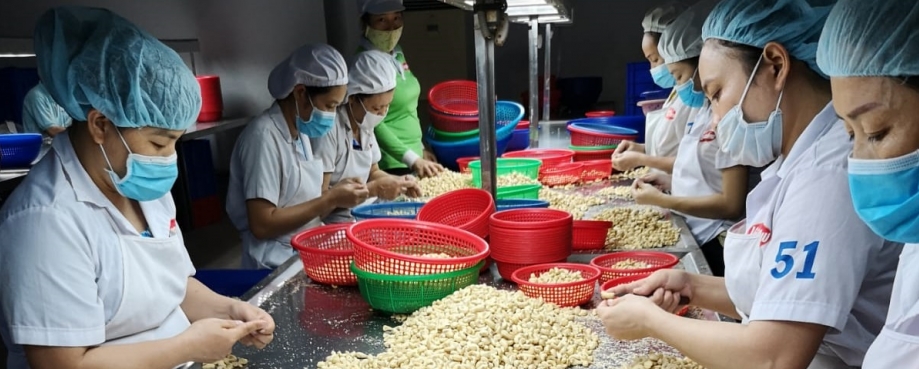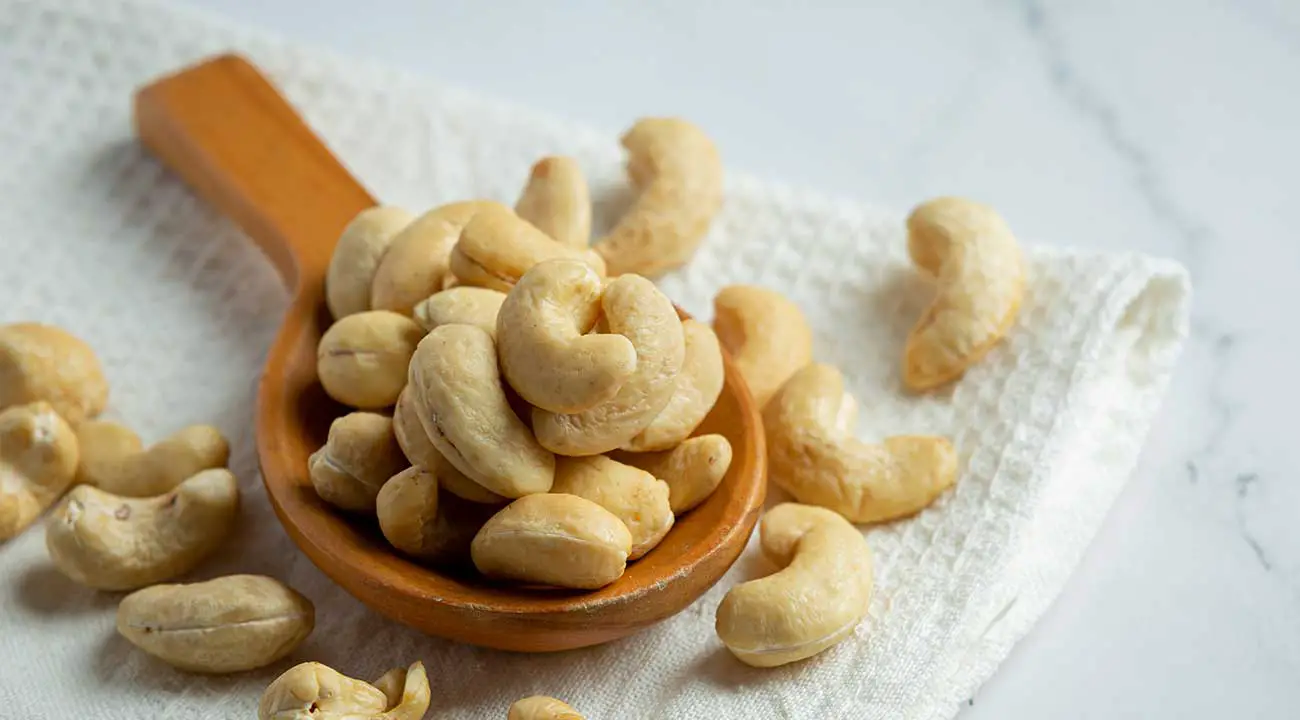Table of Contents
Cashew nuts are one of the most popular nuts in the world. The silky texture and rich creamy flavor make cashews a favorite snack for everyone. Cashew nut is also used to produce a cooking paste, nut butter, and cashew milk. Cashew nuts have a variety of health benefits as well.
It helps in lowering harmful cholesterol, weight loss, boost the immune system, formation of muscles and nervous system, controlling type 2 diabetes, and also provide a lot of nutrition to the human body. Cashews are also good for our heart, bone and research found that cashews help lower depression. But it is not a cheap nut. A pound of first-graded cashew nut is priced up to $15 in the US.
Overview Of The Cashew Nut Industry
Cashew is an agricultural product of tropical areas around the world. Though the Origin of cashew nuts is in Brazil, its production is limited to Asia and African countries. That’s why US, Europe, Australia and Middle Eastern countries are fully importers of cashews.
Ivory Coast, India, Burundi, Vietnam, Philippines, Tanzania, Benin, Mali, Guinea-Bissau, and Brazil are basically producers of raw cashews. According to the industry report of mordorintelligence.com, African countries alone grow 56.5% of the world’s raw cashew nuts, whereas Asian countries produce 44%. Ivory Coast alone produced 20.01% in 2019. But without having the facility for processing, 90% of the nuts are exported to the global market.
According to the ‘United Nations conference on trade and development’, India and Vietnam – accounted for about 98% of the world’s raw cashew imports between 2014 and 2018. According to the indexbox.io analysis, In 2019, India was the largest importer of raw cashews (1.1 Billion dollars) followed by Vietnam (772 Million dollars) and together they import 96% of total cashew imports.
Major exporters of processed cashews are Vietnam and India. In 2020, Vietnam’s share in export value was 64.65%. According to statistica.com, In 2019, approximately 830,470 metric tons of cashew nuts were consumed worldwide. The total market of cashew nuts is estimated to be $6 billion today. Indexbox.io also shows that the value of the cashew market is increasing at an average rate of 4.1% from 2013 to 2019.

According to tridge.com, In 2020, Vietnam was the top exporter of processed cashew nuts and the United States was the top importer of processed cashews. But Ivory Coast was the top producer of raw cashews in 2019. The production volume of raw cashew in the world in 2019 is 3.96 Million metric tons, which is 3.23% less than the previous year.
Because of the recent covid-19 pandemic, the world production of cashews has decreased and export and import value are also drastically hampered due to a lack of export-import facilities.
According to an official of the Department of Agricultural Extension of Bangladesh, Bangladesh imported around 5,000 tonnes of processed cashew nuts in the 2018-19 fiscal year whereas in the 2014-15 fiscal year, total processed cashew nut imports were only 18 metric tons.
Why Cashew Nuts are So Expensive?
The average wholesale price of a kilogram of cashew nut is $10 in the US, which is 7 times more expensive than peanuts. A first graded roasted and salted cashews can be priced up to $15 a pound. Different factors are responsible for the high price of cashews.

Low Yield Ratio
Cashews are not really nuts. In true sense, it is basically the drupe seed of a fruit called ‘Cashew Apple’. The apple looks like a bell pepper. The fruit-producing tree produces the apple and a kidney bean-shaped hard shell is attached under it, which contains only one seed inside it called ‘cashew nut’.
Cashew nut is a seasonal fruit and like other seasonal fruits, it comes into production once a year. So, the production is very low compared to the demand. In 1 hectare of land of cultivation of cashew trees, produce 9000 KGs of Cashew fruit and only 300 KGs of unprocessed cashew nuts.
The amount will further decrease after processing. Although cashew apples are used to produce fruit jam and alcohol in some localities, cashew nuts are the only product that has economic value.
Labor Intensive
Processing of Nuts is Dangerous, and Labor Intensive and Experienced workforce are needed. The cashew plants and nuts contain a toxic ‘Anacardic Acid’ called ‘Urushiol’ which is the same acid found in ‘Poison Ivy’.
When it comes in contact with human skin, it causes burns, itches, rashes, blisters, eyes burn, and headaches. Unprocessed nuts are toxic and cannot be eaten or even touched by bare hands. That’s why cashew nuts need extensive and careful processing than other nuts.

First of all, fully ripe cashew apples are collected from trees. Shelled cashews are collected from the apple and kept under the hot sun. The toxic oil under the shell gets dry and helps ease the shell cracking process. Nowadays, unlike traditional methods, the majority of nuts are being dried at high temperatures with the help of a machine.
The most difficult and dangerous step comes next. Cracking open the shell and collecting the nuts from inside is risky because the toxic oil is still inside. Although Vietnam does it by machine after the automation and high infrastructural investment; Africa, India, and Sri Lanka are still doing it by hand.
Machines ease the process and double the production. Companies do not provide sufficient gloves to the laborers as gloves are also damaged by the acid and slow down the process as well as cut the costs.
The nuts require roasting again. After that, the toxicity inside it is neutralized completely. But, during the process, a dangerous toxic is released into the air, which causes eye burning and itches.
Peel off the cliff or the skin of the nut comes on the next step. The skin of cashew nut is ‘Tannin’ which causes throat itches if eaten. Because of that, peeling off the skin is important. It is also a very time-consuming job as it is done manually and requires expertise to do it. Otherwise, nuts will break and the price will drop down to one-fourth of the whole nuts.
Store And Preservation Is Expensive
Store and preservation of cashew nuts is also a complicated task. As it is a seasonal crop, it needs to store to sell all over the year and keep the supply chain active. Nuts require air-tight bags or pots and are stored in a dry place. The process also requires a lot of space to store the nuts. This storing and preservation process also adds costs that eventually affect the final price of the Cashew Nut.
Supply Chain
The high price of cashew nuts also depends on availability and supply chain. African countries like Ivory Coast, Tanzania, and Mozambique grow almost half of the cashew nuts but cannot process it due to lack of technology and expertise.
Unprocessed nuts are sent mostly to Vietnam and India for further processing and to prepare edible nuts for exports in the US, Canada, Australia, New Zealand, and other developed countries. The whole supply chain is costly and time-consuming which directly affects the retail price of cashew nuts.
For example, According to UNCTAD, in 2018, the export price of 1 KG of cashew nut from India to the European market is 3.5 times higher than the price paid to Ivory coast farmers. And after the secondary processing in Europe, the retail price becomes 8.5 times higher than the farmers paid in the Ivory Coast. Although processing plants are established in Africa, the benefits of ‘Low Prices’ will come in the future.
Inadequate Supply To Meet The Rising Demand
The demand for cashew nuts is rising every year. People are prone to be health-conscious in recent years. They are demanding more nutritious food like cashews that have a lot of health benefits. But, the scarcity of supply along with increasing demand resulted in excessive price rise in the last couple of years and is still on the go.
The world’s climate disturbance also hampers the production of cashews. Due to climate changes in tropical areas, summer and rainy seasons have come late in recent years. Thus, it directly affected the harvesting time of cashews. Adding to that, some farmers report that they got almost half of the crops in recent years than they usually get in the past.
A report in 2013, ‘climate’s impact on cashews’ shows unseasonal rain and heavy dews impact the quality and quantity of nuts, even late harvesting. As it is a seasonal crop, the production cannot be increased according to the rising demand. Research shows that the estimated market value of cashew nuts will increase to $6.932 Billion in 2025. Due to the limited capacity of production, the growing demand cannot be met, and eventually, the price will rise.










Leave a Comment